Thermal Behaviour of Black Timber Façades
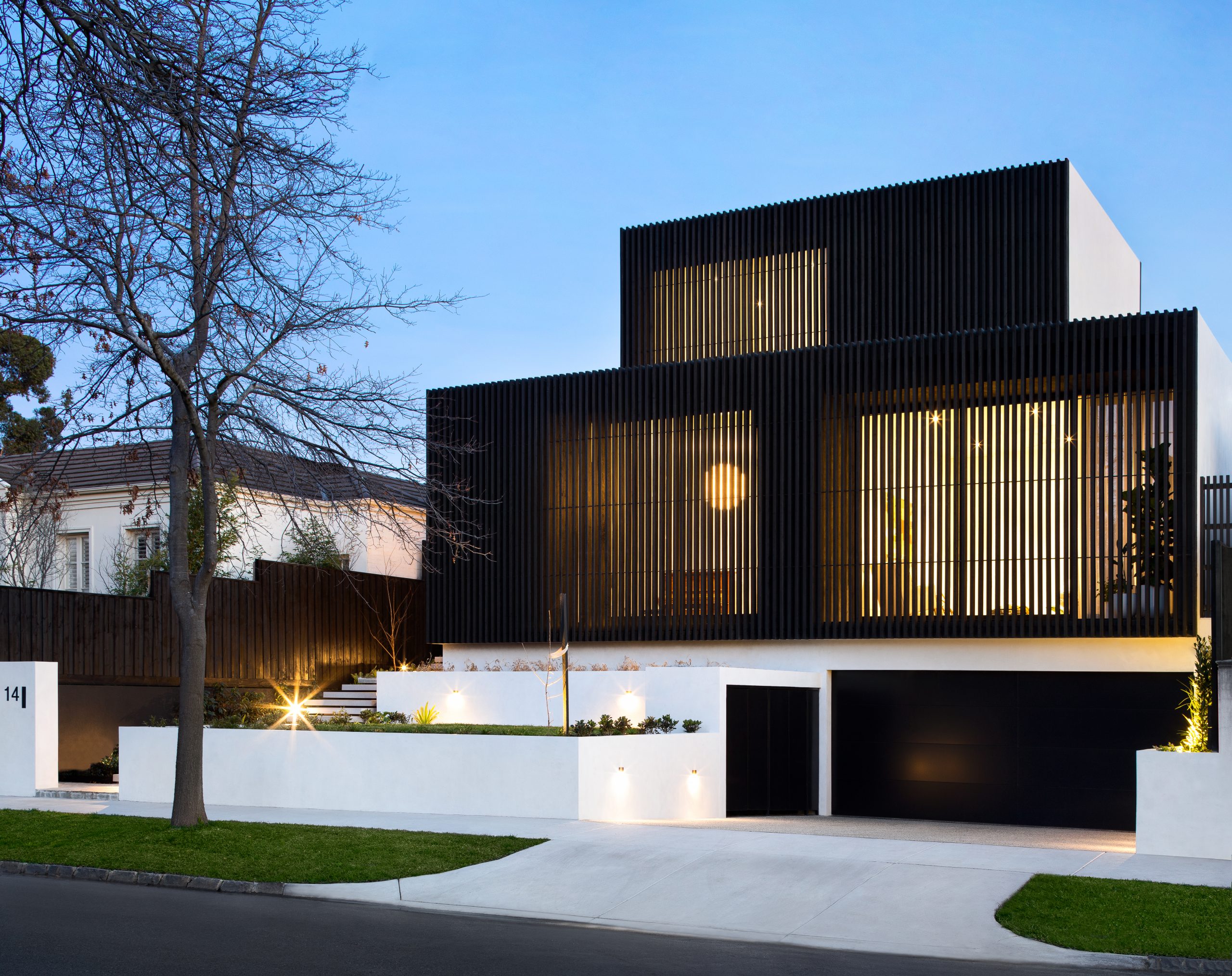
Key Takeaways
- Black timber façades absorb more heat than lighter finishes, but with ventilation, insulation and shading this can be used to support passive solar design.
- The choice of finish affects performance and maintenance, with charred timber offering the best durability, oil finishes providing natural breathability, and pain requiring more upkeep.
- Design detailing such as using dense timber species, ventilated cladding systems and UV-resistant coatings are essential for long-term durability and energy performance.
- Black timber façades can meet Australian BAL 19 to 29 requirements dependant on bushfire-resisting species such as Spotted Gum, Jarrah, Blackbutt or Ironbark.
- Although black timber absorbs up to 90-95% of solar radiation, its thermal conductivity is around 200 – 500 times lower than aluminium and significantly lower than concrete or brick.
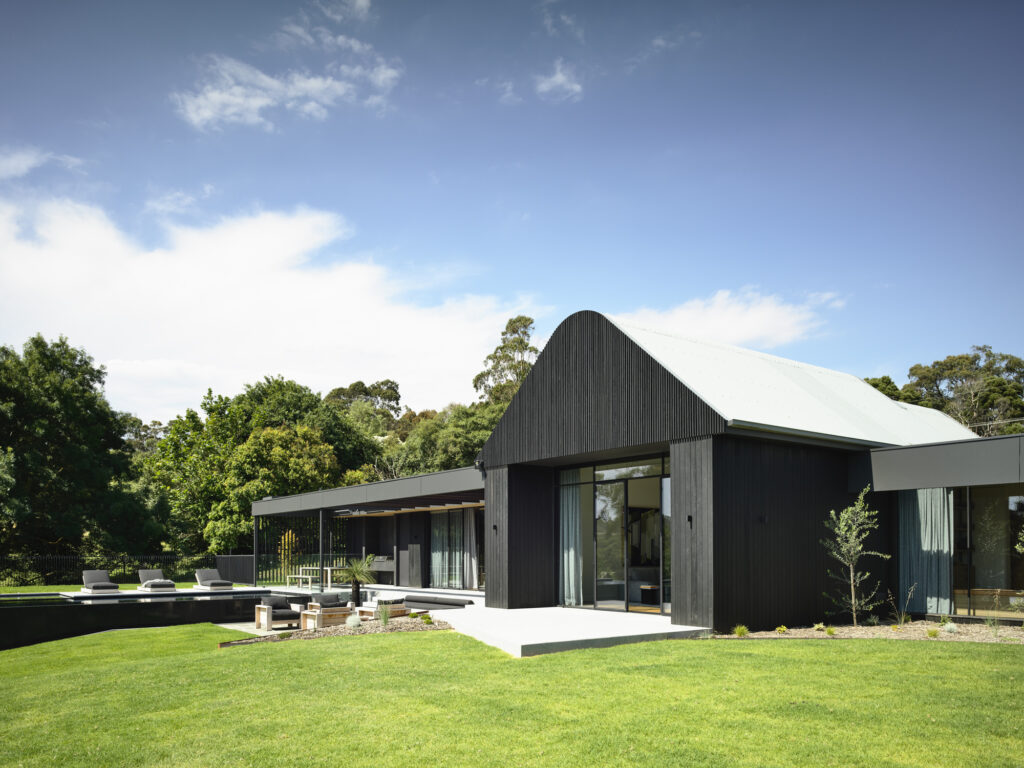
Black timber façades have become a hallmark of contemporary design, offering bold aesthetic complements to both modern and traditional architecture. From painted to charred timber finishes, black timber surfaces deliver on depth, contrast and durability while offering greater solar absorption and higher surface temperatures when compared to raw or light timber finishes.
Understanding how black timber finishes perform under heat and how design strategies can mitigate thermal gain is key to achieving both, performance and visual impact in sustainable and energy-efficient homes.
Understanding Heat Absorption in Dark Timber Finishes.
The darker the surface, the lower its solar reflectance and the greater its heat absorption. Black and charred timber convert light to heat efficiently. With charred, Shou Sugi Ban timber and black oiled finishes performing similarly thermally, the char layer of Shou Sugi Ban finish adds a slight insulating effect to the timber.
Black Timber Façades and Heat: How Hot Do They Get in the Sun?
Dark Timber absorbs up to 90-95% of solar radiation, compared to around 20% for light finishes. In warm Australian climates, surface temperatures can reach above 30-40 °C ambient air temperature. Because timber acts as a good insulator and has a low thermal conductivity (around 0.12 -0.16W/m-k), most of that heat stays near the surface with the back of the board and the wall cavity remaining much cooler.
How Timber’s Low Thermal Conductivity Improves Heat Management and Energy Performance
Timber is naturally insulating. Its thermal conductivity is around 200 – 500 times lower than aluminium and significantly lower than concrete or brick. This means that while the outer surface may heat quickly, it does not transfer heat inward. This property makes timber façades comfortable to the touch even after direct sun exposure and helps maintain stable indoor temperatures when paired with proper cavity ventilation.
How Colour and Finish Affect the Durability of Black Timber Cladding
While paint, oil and charred finishes can achieve deep, dark tones, each finish behaves differently under heat, weather and time. The choice of finish plays a major role in both the appearance and performance of timber. Darker finishes attract more UV and thermal stress. As a result, dark timber experiences greater cycles of expansion and contraction.
To ensure durability:
- Use a dense, stable species such as Spotted Gum, Jarrah, or Burnt Ash
- Choose finishes with flexible binders and UV inhibitors, such as WOCA Exterior oil or Cutek C50 Colourtone.
- Detail Façades to reduce direct sun exposure where possible.
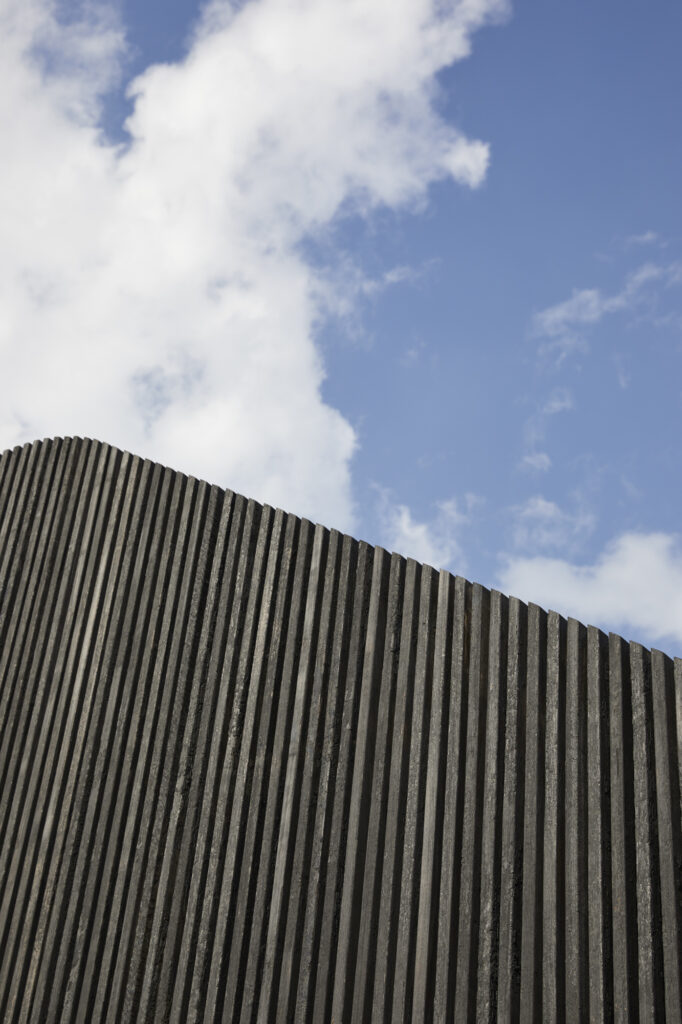
Managing Thermal Stress and UV Exposure in Black Timber Façades
Extreme changes in surface temperatures can stress coatings and timber fibres and cause timber to move.
Mitigation strategies include:
Considering adequate ventilation to reduce heat buildup.
Useing Oil finishes that penetrate the timber rather than form a brittle film.
Designing with Charred Finishes that resist UV breakdown through properties of their char layer
Mortlock Timber’s Black Timber Façade Finishes and Coating Options
Our knowledge and expertise in the timber industry will serve as a valuable resource to help you make informed choices, ensuring your projects are not only visually captivating but also, that they withstand the tests of time, weather, and daily use. Learning which timber coating is right for your project is paramount to the longevity and quality of your exterior timber project.
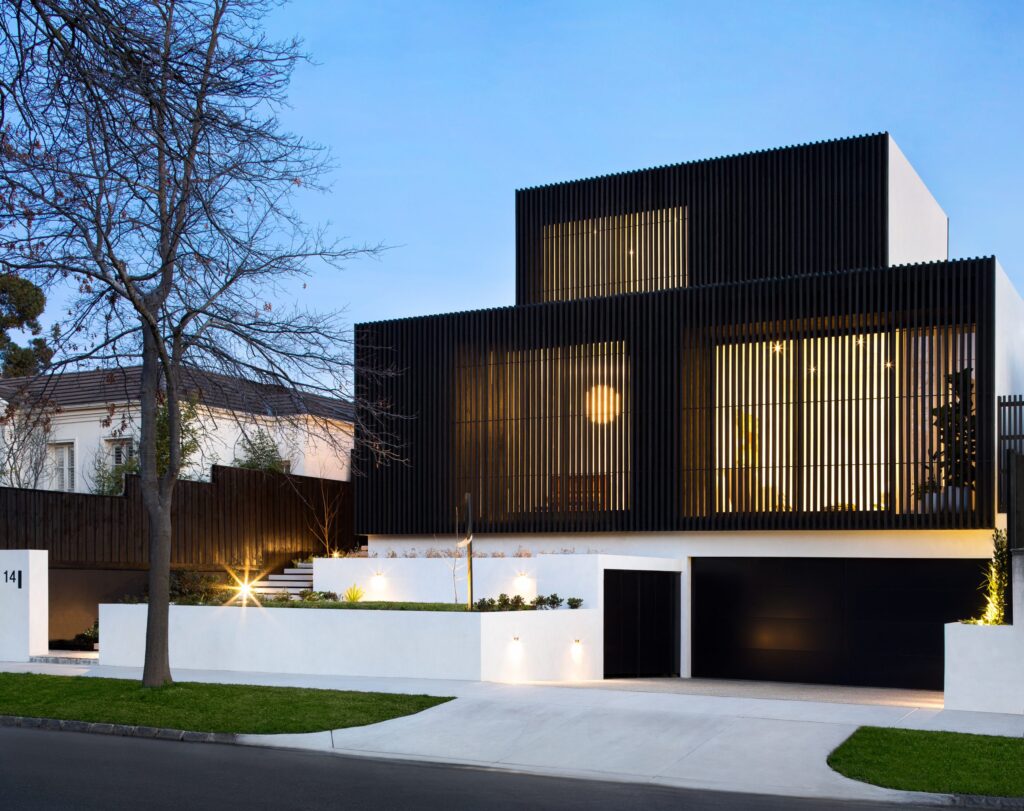
Charred Finish (Shou Sugi Ban)
Mortlock Timber achieves its blackened, Shou Sugi Ban charred appearance through a proprietary controlled burning machine that evenly chars each side of the timber. This is done to achieve a deep char while avoiding issues of the timber warping due to uneven heat distribution. The charred surface is resistant to UV, insects, and moisture. Thermally, charred boards absorb heat like any black finish but unlike paint or oil, the finish will not peel or blister. Mortlock Timber often combines the Shou Sugi Ban finished timber finish with two coats WOCA Exterior oil to help bind the char layer and reduce rub-off after weathering. The first coat is applied in our factory before the product is delivered to site, with a second coat recommended after installation.
Oil Based Finish
Mortlock Timber uses a variety of oil based finishes with the most popular being Cutek Extreme CD50 (Clear & with Colour tone options) & WOCA Exterior Oil. Each oil finish enhances the natural grain by penetrating the timbers fibre, protecting it from within. While oils absorb heat similarly to paint, they tend to fade gradually rather than cracking or peeling, making maintenance simpler. Regular reapplication is essential to maintain both appearance and protection, especially in full sun exposure.
Painted Finish
Although Mortlock Timber does not recommend or offer any painted finishes for use on our timber, paint provides uniform colour and high opacity while effectively blocking UV and moisture from weathering the timber. However dark paints absorb the most solar radiation, leading to higher surface temperatures and maintenance requirements. Painted timber finishes are prone to cracking and peeling.
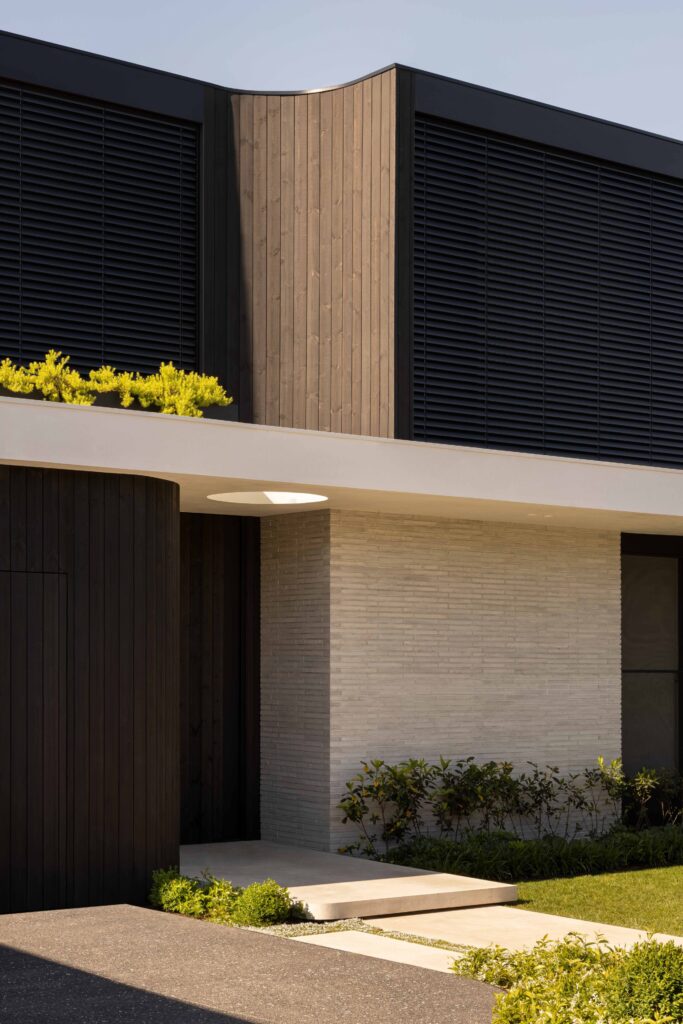
How Black Timber Cladding Supports Passive Solar and Energy-Efficient Design
In well-insulated buildings, black timber can act as a passive solar collector. By absorbing warmth during the day, it slightly increases the temperature of the air within the façade cavity and outer wall, reducing the temperature gradient that drives heat loss. During winter, this effect can reduce heating demand inside a home.
How to Turn Heat Absorption into a Thermal Performance Advantage with Black Timber
Black timber’s ability to heat and cool rapidly can be an advantage in climates with high diurnal temperature ranges. When paired with internal design decisions, controlled direct sunlight exposure allows homes to maximise black timbers quick heat response to perform dynamically while maintaining its rich architectural appeal.
Black Timber Fire Performance and BAL19 Compliance in Bushfire Areas
Mortlock Timber offers various timber species that are BAL-compliant. This means the timber achieves or exceeds density, installation and non-combustable or bushfire-resisting requirements. BAL rated timber is rated to resist ignition and reduce the change of embers causing damage in moderate bushfire rated areas. Mortlock Timber offers various timbers with a rating of BAL-19 or higher such as;
Spotted Gum | Group 3, BAL 12.5, 19 & 29
Blackbutt | Group 3, BAL 12.5, 19 & 29
Ironbark | Group 3, BAL 12.5, 19 & 29
Jarrah | Group 3, BAL 12.5 & 10 BAL 29 when used in conjunction with non-combustible wall cladding and enclosed subfloor
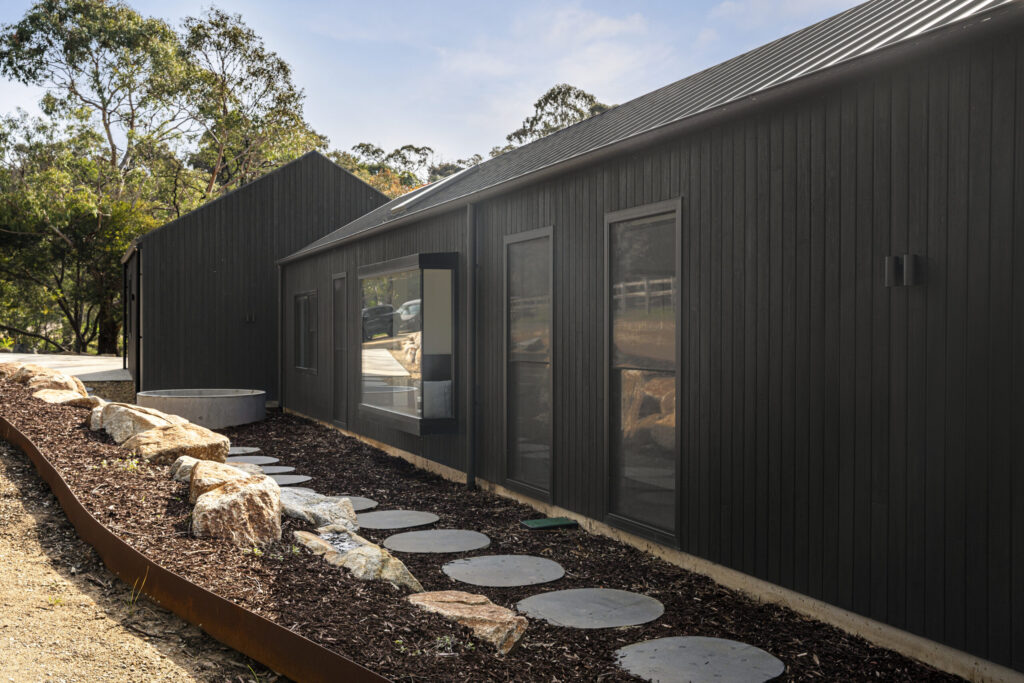
Bring your vision to life with Mortlock Timber
Whatever your next project—luxury home, commercial space, or public project—Mortlock Timber helps bring nature-inspired architecture to life.
Our premium Australian timber cladding, battens, and ceiling systems are trusted by leading architects for their sustainability, precision, and aesthetic versatility.
- Explore our timber product range:
- If you need timber cladding, we recommend Trendplank — a durable, architect-favourite system for internal and external applications.
- If you need timber battens, choose Proplank — a versatile batten system for walls, ceilings, and screens.
- If you need timber lining or panelling, explore Satinplank or Trendplank — both offer a refined, seamless finish for interiors.
- And if you need timber decking, discover our high-performance range: Metroplank, Classicplank, and Marineplank.
- Download our Product and Pricing Guide or call our specialists on 1800 953 004 to discuss your design vision
View our pricing and product guide
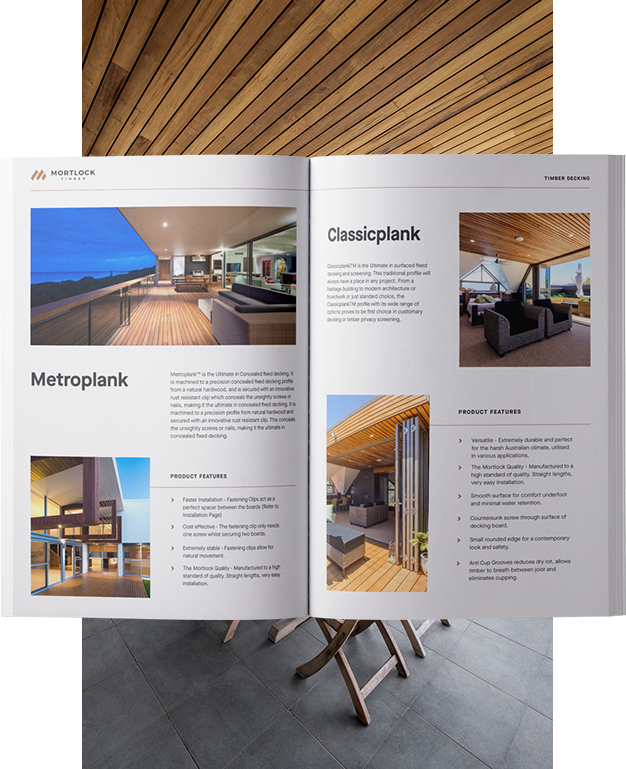
We are committed to bringing you timber products that add value and endure for years to come, even in heavy traffic and harsh weather conditions. We understand the value of efficiency when it comes to installation and keeping hardwood timber costs down. That’s why we’ve spent decades perfecting our designs to make them easier to handle, less wasteful and more efficient to install. This efficiency allows us to offer you premier products that are more cost-effective so that you can experience greater savings on timber wall costs, timber ceiling costs, timber cladding costs and timber decking costs.
Download our Pricing and Product Guide for our complete hardwood timber price list including timber decking prices, timber wall prices, timber ceiling prices and timber cladding prices.